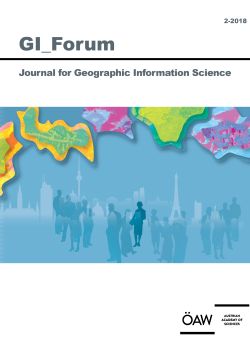 |
 |
Adrijana Car – Thomas Jekel – Josef Strobl – Gerald Griesebner (Eds.)
GI_Forum 2018, Volume 6, Issue 2
Journal for Geographic Information Science
Andreas Braun,
Johanna Stötzer,
Susanne Kubisch,
Sina Keller
S. 302 - 321 doi: 10.1553/giscience2018_02_s302
Verlag der Österreichischen Akademie der Wissenschaften doi: 10.1553/giscience2018_02_s302
Abstract:
Modernizing societies become increasingly dependent on critical infrastructures (CRITIS), one of the most important of which is the road network. Road networks are vulnerable to hazards from the natural environment (e.g. extreme weather conditions, seismic and volcanic events, and landslides) and social environment (e.g. intentional attacks, traffic jams, roadblocks). Conversely, road networks impose vulnerability on their social environment (e.g. on people trying to leave disaster zones). Investigating the particular vulnerability of a given road network in order to increase its resilience is crucial for disaster risk reduction by spatial planning. However, in many cases in developing countries, the vulnerability of people still seems more pressing than the vulnerability of CRITIS. This paper develops an approach for investigating road network vulnerability in developing regions, using a Chilean example. However, the approach is sufficiently generic to be applied to comparable situations in other countries.
critical infrastructure (CRITIS), road network vulnerability, Chile, spatial planning in disaster risk reduction, generic model Published Online:
2018/12/10 12:59:24 Object Identifier:
0xc1aa5576 0x003a2046
Rights:https://creativecommons.org/licenses/by-nd/4.0/
GI_Forum publishes high quality original research across the transdisciplinary field of Geographic Information Science (GIScience). The journal provides a platform for dialogue among GI-Scientists and educators, technologists and critical thinkers in an ongoing effort to advance the field and ultimately contribute to the creation of an informed GISociety. Submissions concentrate on innovation in education, science, methodology and technologies in the spatial domain and their role towards a more just, ethical and sustainable science and society. GI_Forum implements the policy of open access publication after a double-blind peer review process through a highly international team of seasoned scientists for quality assurance. Special emphasis is put on actively supporting young scientists through formative reviews of their submissions. Only English language contributions are published.
Starting 2016, GI_Forum publishes two issues a Year.
Joumal Information is available at: GI-Forum
GI_Forum is listed on the Directory of Open Access Journals (DOAJ)
|




 Home
Home Print
Print
 References
References
 Share
Share
